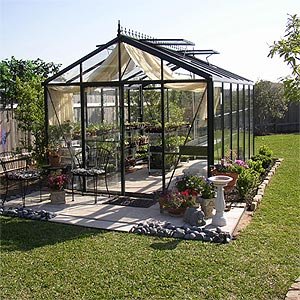Last night CTD commented on my post "If I could design a system from scratch...," saying:
You may have already thought about a subterranean heating and cooling system, but if not, here's a couple of links. I'm considering one of these for its year-round efficiency (off grid if I can get the math to work out) and possibly a small rocket mass as a supplement for those really cold stretches...
http://www.youtube.com/view_play_list?p=672EC08E98ABA0FD
http://www.sunnyjohn.com/indexpages/shcs.htm
Such cool stuff! The subterranean heating/cooling system is primarily three layers of Underground Air Circulation Tubing (UACT), 4 inch thin-walled perforated drainage tubes (less than $6 per 10 foot length at Home Depot). The tubes are spaced about every 2 feet horizontally in each layer, and the UACT layers are each a foot deep. The tubes are connected to a plenum (e.g., a 55-gallon drum) at each end, and a fan blows the entire volume of the greenhouse through the underground tubing every 10 minutes.
During days when it gets toasty in the greenhouse, air enters the system warm and moist and comes out cool and dry, leaving the moisture and heat energy in the soil. When the greenhouse air gets colder than the soil (e.g., winter nights), the fan pumps cool air through the ground and it comes out warmer and moister.
John Cruickshank of SunnyJohn.com says he's created greenhouses in Zone 4 (average minimum temperature of -25 degrees F) that maintain a Mediterranean environment all year round without any supplementary heat.
I still want to include a rocket mass heater. One, I like to burn things (wood). Two, I like to cook things (pizza...). Three, my greenhouse isn't a double-glazed marvel of heat retention, so it will probably need supplemental heat, even though I'm in Zone 7 (average minimum temperature of 5 degrees F).
Here are some sketches of how I think I could have both a Subterranean Heating and Cooling System (SHCS) and a Rocket Mass Heater (RMH).

























